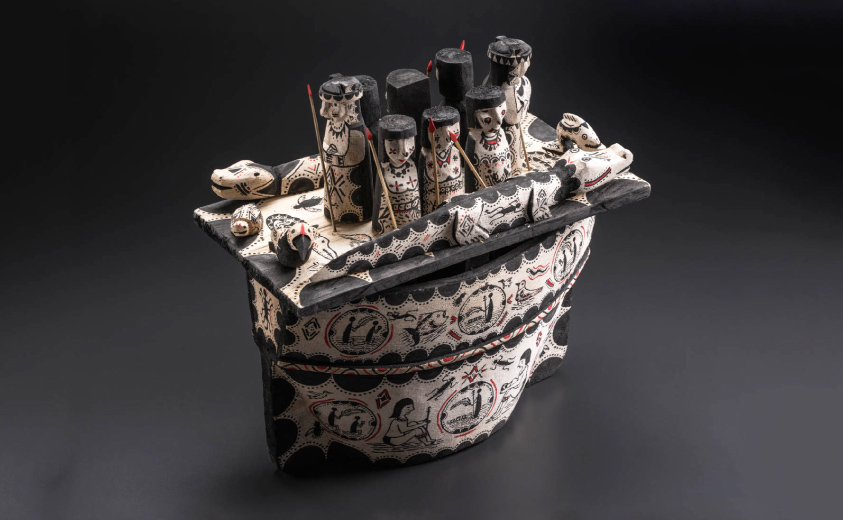
La comunidad indígena Wounaan habita la cuenca del Bajo San Juan. Estas piezas están hechas en balso tallado en una sola pieza. Por ser gente de agua y de monte, los Wounaan aprenden de su maestro Jaibaná a tallar y teñir la madera de balso para dar forma a este barco sagrado. Sus figuras están cargadas de significado y simbolizan personajes que protegen y que llevan los saberes del mundo Wounaan. En su cubierta, los diferentes hombres y animales representan los diversos espíritus que el maestro entrega al aprendiz a manera de protección de las enfermedades y de apoyo en su ascenso como Jaibaná. Esto está relacionado a los espíritus ancestrales animales que pueden contemplarse en el arte y la religión africanas.
The Wounaan indigenous community lives in the basin of the Lower San Juan River. These wares are made in single-piece carved balsa wood. Being people of the water and the mountain, the Wounaan learn to carve and dye balsa wood from their master Jaibaná to shape this sacred boat. The latter’s figures are filled with meaning and portray characters who protect and carry the knowledge of the Wounaan world. On its deck, various people and animals represent the diversity of spirits that the master hands over to the apprentice as protection from disease and support in their ascent as Jaibaná. This is related to the ancestral animal spirits that can be found in African art and religion.
Relacionados: Oficio artesanal; Artesanía indígena; Artesanía